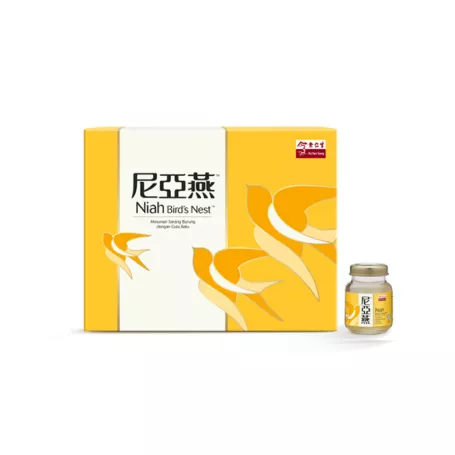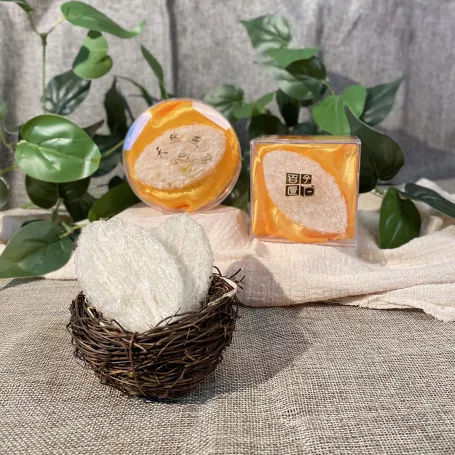Best Guide to Edible Bird's Nest Benefits: Nutrition, Beauty, and Health Secrets Revealed

Edible bird's nest has long been esteemed as a precious delicacy, particularly in Chinese culture, for its unique nutritional profile and health-enhancing properties. This article delves into the core nutritional components of edible bird's nests, their health benefits, and offers practical guidance on selecting high-quality products.
Nutritional Components of Edible Bird's Nest
Sialic Acid — Supports Cellular Repair and Immune Function
A prominent component of edible bird's nests is sialic acid, also known as N-acetylneuraminic acid. Research indicates that sialic acid plays a crucial role in neurological development and enhancing immune responses. Notably, it contributes to brain function and has been associated with cognitive improvements in animal studies.
Interesting Fact: Sialic acid is also abundant in human breast milk, underscoring its importance in early neurological development.
Proteins and Amino Acids — Promote Skin Repair and Elasticity
Edible bird's nests are rich in proteins and contain a variety of essential amino acids. These amino acids are vital for collagen synthesis, aiding in the repair of damaged skin tissues and maintaining skin elasticity. Studies have demonstrated that components in bird's nests can protect skin cells from oxidative stress and promote anti-aging effects.
Interesting Fact: While bird's nests provide beneficial proteins, their amino acid profile differs from that of common protein sources like eggs, which offer a more comprehensive range of essential amino acids.
Minerals and Trace Elements — Enhance Blood Circulation and Complexion
These nests also contain essential minerals such as calcium, iron, potassium, magnesium, and zinc. These elements are integral to metabolic processes and circulatory health, contributing to improved complexion and overall well-being.
Health Benefits of Edible Bird's Nest
Skin Rejuvenation — Nourishes Skin and Delays Aging
The sialic acid and proteins in edible bird's nests penetrate the skin, promoting metabolism and delaying the aging process. Regular consumption has been linked to enhanced skin radiance and elasticity.
Interesting Fact: Traditional Chinese medicine has utilized bird's nests for centuries, believing in their restorative properties for skin health.
Respiratory Health — Suitable for Chronic Cough and Pulmonary Weakness
Traditional practices suggest that edible bird's nests possess properties that soothe the lungs. They are often recommended for individuals experiencing chronic respiratory issues, as they may help alleviate symptoms associated with lung dryness.
Immune System Support — Beneficial for Postpartum Recovery and Convalescence
Known for their gentle and nourishing nature, edible bird's nests are commonly consumed by postpartum women to aid in recovery and boost immunity. They are also considered beneficial for individuals recuperating from illnesses, providing essential nutrients to support the healing process.
How to Select High-Quality Edible Bird's Nest
Color Observation — Natural Nests Exhibit Off-White or Pale Yellow Hues
Authentic, untreated bird's nests typically display colors ranging from off-white to pale yellow. Nests that appear exceptionally white may have undergone bleaching, which can compromise their nutritional integrity.
Texture Assessment — Genuine Nests Have Distinct, Resilient Strands
High-quality bird's nests feature clearly defined strands that are resilient and less prone to breakage. When soaked and cooked, they should maintain their fibrous structure without disintegrating.
Interesting Fact: Approximately 80% of the world's premium edible bird's nests are sourced from Malaysia and Indonesia, regions renowned for their ideal swiftlet habitats.
Selecting a Trusted Brand — Ensuring Quality and Authenticity
Choosing products from reputable brands is crucial to ensure the authenticity and quality of edible bird's nests. Established brands often adhere to stringent quality control measures, providing consumers with products that are both safe and nutritionally beneficial.
Frequently Asked Questions (FAQ)
1. Who Can Consume Edible Bird's Nest?
Edible bird's nests are generally suitable for individuals across various age groups, including pregnant women, postpartum mothers, individuals with weakened immune systems, those recovering from surgery, the elderly, and individuals seeking to enhance their skin health.
2. How Should Edible Bird's Nest Be Prepared to Retain Its Nutrients?
It is recommended to use a double-boiling method: soak the nest until it softens, place it in a bowl with an appropriate amount of water, and add ingredients like rock sugar, goji berries, or red dates according to personal preference. Double-boil for 30–45 minutes. Avoid excessive heat or prolonged cooking times to prevent nutrient loss.
3. Is Daily Consumption of Edible Bird's Nest Advisable?
While edible bird's nests are gentle and non-toxic, moderation is key. Consuming them 2–3 times a week, with each serving comprising 3–5 grams of dried nest, is generally sufficient to meet nutritional needs. Specific circumstances, such as postpartum recovery, may warrant adjusted intake frequencies.
4. Are There Individuals Who Should Avoid Edible Bird's Nest?
Individuals with known allergies to proteins should exercise caution. Those experiencing colds or fevers, infants under six months, and individuals with severe respiratory conditions are advised to refrain from consumption during these periods.
5. What Is the Difference Between Edible Bird's Nest and Hasma?
Edible bird's nest is constructed from the saliva of swiftlets and is renowned for its high protein and sialic acid content, contributing to skin health and immune function. Hasma, conversely, is derived from the dried fatty tissue near the fallopian tubes of the snow frog. Traditionally used in Chinese cuisine, hasma is believed to benefit the respiratory system and improve skin complexion. While both are esteemed for their purported health benefits, they differ significantly in origin and nutritional composition.
6. What Is the Recommended Serving Size for Edible Bird's Nest?
A typical serving size is 3–5 grams of dried edible bird's nest. Consuming this amount 2–3 times per week is generally considered sufficient to reap its health benefits. Consistent, moderate consumption is more effective than infrequent large quantities.
Conclusion
Edible bird's nest stands as a revered delicacy with a rich history, offering a unique blend of proteins, sialic acid, and essential minerals that contribute to various health benefits, including skin rejuvenation, respiratory support, and immune system enhancement. By understanding its nutritional components, health benefits, and proper selection methods, consumers can make informed choices to incorporate this traditional superfood into their diets effectively.
When selecting edible bird's nest, prioritizing reputable sources ensures product authenticity and quality. Additionally, adhering to recommended preparation methods and consumption guidelines maximizes the potential health benefits while minimizing any associated risks.

 Bahasa melayu
Bahasa melayu 中文
中文

























